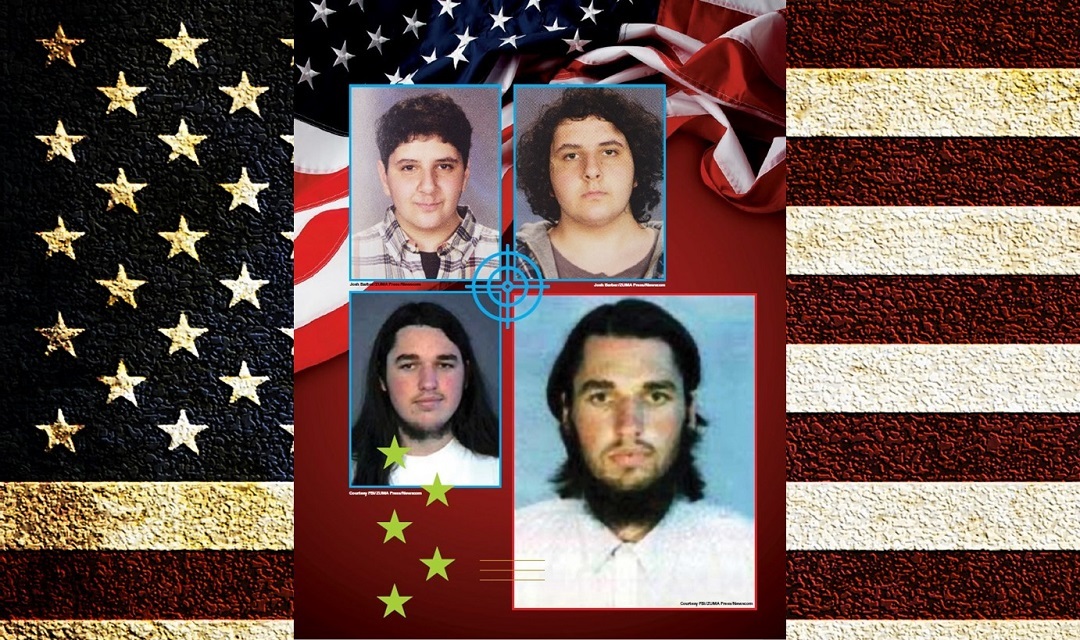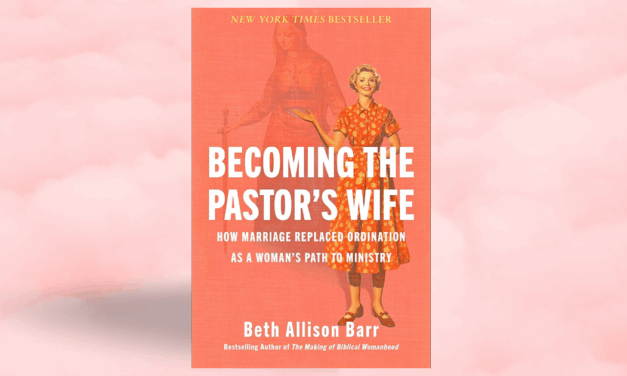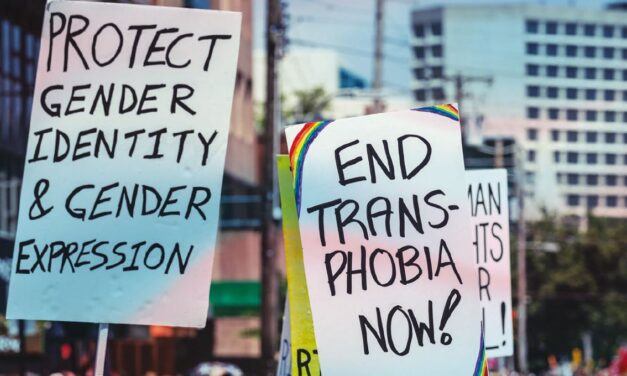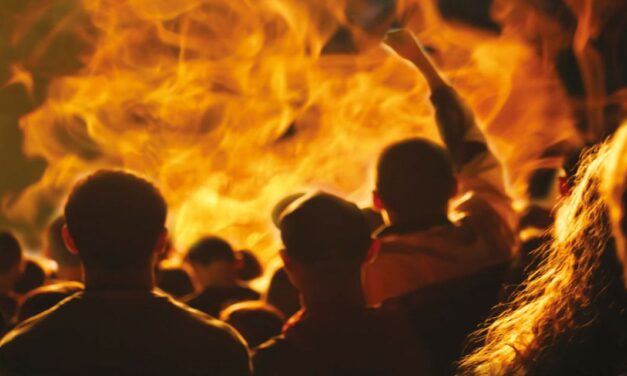This article first appeared in the CHRISTIAN RESEARCH JOURNAL, volume 38, number 01 (2015). For further information about the CHRISTIAN RESEARCH JOURNAL go to: http://www.equip.org/christian-research-journal/
SYNOPSIS
There is a disturbing trend among Western converts to Islam. While those who actually become terrorists are few, the figures are nevertheless much higher than among converts to other religions and ideologies. If we hope to change this trend, we must first understand it. A number of case studies show that radical converts come from a variety of social, educational, and economic backgrounds. They are male and female, young and old. Factors posited to make sense of the shift toward extremism (e.g., hormonal changes, identification with victims of oppression, or a desire for notoriety) fail to explain the shift, for such factors are common among followers of other religions, and there is no comparable shift toward violence in these other religions. The only common threads among radical converts appear to be (1) a willingness to obey whatever they believe God has commanded, and (2) the belief that God has commanded them to fight oppressors or unbelievers. A willingness to obey God is a personality trait that is shared by many adherents of other religions. Hence, the belief that God calls for violence is the most likely candidate for explaining why so many converts to Islam decide to wage jihad. Although it may be difficult for Westerners to acknowledge that Islam calls for the subjugation of non-Muslims (especially if we have peaceful Muslim friends), understanding why most Muslims don’t wage jihad (despite what Islam teaches) opens the door to an honest discussion of ideology without hostility toward individuals.
In 1940, with World War II well underway, famed English writer George Orwell penned a review of Adolf Hitler’s Mein Kampf. Noting the confusion among Western thinkers concerning Hitler’s rise to power, Orwell drew attention to the false assumption that led to their confusion:
Nearly all western thought since the last war, certainly all “progressive” thought, has assumed tacitly that human beings desire nothing beyond ease, security and avoidance of pain…. Hitler, because in his own joyless mind he feels it with exceptional strength, knows that human beings don’t only want comfort, safety, short working-hours, hygiene, birth-control and, in general, common sense; they also, at least intermittently, want struggle and self-sacrifice, not to mention drums, flags and loyalty-parades. However they may be as economic theories, Fascism and Nazism are psychologically far sounder than any hedonistic conception of life. The same is probably true of Stalin’s militarised version of Socialism. All three of the great dictators have enhanced their power by imposing intolerable burdens on their peoples. Whereas Socialism, and even capitalism in a more grudging way, have said to people “I offer you a good time,” Hitler has said to them “I offer you struggle, danger and death,” and as a result a whole nation flings itself at his feet.1 [Emphasis in original]
Seven and one-half decades later, many Western leaders make the same false assumption—namely, that people only want comfort and safety. With this assumption in place, we struggle to make sense of terrorist groups such as Boko Haram, al-Shabaab, the Taliban, Hamas, al- Qaeda, and, of course, ISIS. “Surely,” we think, “the violence carried out by these groups must be the result of poverty or lack of education.”
Further outbreaks of terrorism, however, rule out such simplistic explanations. Major Nidal Malik Hasan, for instance, was born in Virginia and became an officer in the U.S. Army. As a professional psychiatrist, he was highly educated and certainly didn’t live in poverty. Why did Hasan carry out one of the deadliest terrorist attacks in U.S. history?
Here one might note that Hasan’s parents were Palestinian, and that he had a vicarious sense of oppression. But if this is the answer, why don’t we see children of immigrants from non-Muslim countries launching terrorist attacks? People from many nations believe that the United States has interfered in their nation’s affairs. Why don’t their relatives in the United States start shooting U.S. soldiers?
American Converts
A more glaring difficulty with the “vicarious oppression” response concerns the recent trend among American converts to Islam who decide either to launch terrorist attacks in the United States or to travel abroad and join foreign terrorist groups. Many of these converts are well educated, aren’t impoverished, and have no experience of oppression. Why do they wage jihad?
In this article, we will sift through the data and the possible explanations of this data in order to understand American jihadists. After discussing twelve individuals who became terrorists after converting to Islam, we will assess a typical effort to account for the increase in homegrown terror. In the end, a simple analogy will shed light on the relationship between Islam and terrorism.
A TALE OF TWELVE TERRORISTS
In attempting to understand terrorists, it’s helpful to have some specific examples in mind. While there have been many American terrorists who come from Muslim families, cases of jihad involving converts to Islam are more interesting for our purposes, because the radicalization can’t be attributed to being raised in an Islamic environment. Hence, let’s consider twelve examples of people who were raised in the United States but who became radicalized after converting.
- Carlos Bledsoe was born in 1985 in Tennessee. Though his parents raised him as a Baptist, he converted to Islam in 2004 and was immediately drawn to jihadist teachings. He spent sixteen months teaching English in Yemen. When he was taken into custody for an expired visa, he was carrying a fake Somali passport and books on explosives. Bledsoe later admitted that he was heading to Somalia to be trained in building car bombs. Without the necessary training, he modified his plans. Following his deportation to the United States, he opened fire at the Little Rock U.S. Army Recruiting Center, killing one soldier and wounding another. He was caught by police, pleaded guilty, and was sentenced to life in prison.
- Zachary Adam Chesser was born and raised in Virginia, where he played football and basketball in high school. In 2008, an eighteen-year-old Chesser began dating a Muslim girl, and he soon converted to Islam. The following year, he joined the group Revolution Muslim and praised Nidal Malik Hasan for the Fort Hood massacre. Arrested in 2010 while traveling to Somalia to join al-Shabaab, Chesser pleaded guilty to sending threats to South Park creators Trey Parker and Matt Stone (for their plans to feature Muhammad in an episode), solicitation to desensitize law enforcement (i.e., advising Muslims to leave backpacks in public places until police become desensitized), and attempting to provide material support to a terrorist organization. He was sentenced to twenty-five years in prison.
- Shannon Maureen Conley (aka Halima Shannon Conley) converted to Islam from Catholicism during her junior year of high school and became increasingly radical in her views. In 2013, Conley started appearing in Muslim garb at Faith Bible Church in Arvada, Colorado, often carrying a large backpack. She later admitted it was to frighten the attendees. As preparation for her career as a jihadist, she went through training in firearms and military tactics. Conley then attempted to travel to Syria, where she planned to join the Islamic State, using her skills as a nursing assistant to care for injured jihadists. Conley was taken into custody at Denver International Airport. In exchange for her testimony, she was able to plead guilty to a reduced charge of conspiracy to aid a foreign terrorist organization.
- Adam Gadahn (aka Azzam al-Amriki) grew up on a farm in California. He was homeschooled and raised as a Protestant. He converted to Islam when he was seventeen years old. Two years later, he was arrested for assaulting his mosque’s chairman for being friendly toward Jews and not wearing Islamic garb. A year later, in 1998, Gadahn moved to Pakistan, where he joined al- Qaeda and eventually became one of Osama bin Laden’s senior advisors. He appeared in a series of al-Qaeda propaganda videos and is now on the FBI’s “Most Wanted Terrorists” list.
- Omar Hammami (aka Abu Mansoor al-Amriki) was raised in Alabama as a Southern Baptist, but he converted to Islam in high school when his father (who had drifted away from Islam for many years) became a practicing Muslim. Hammami would later join al-Shabaab in Somalia, where he became a leader. He was killed in 2013 by members of al-Shabaab for criticizing the group’s focus on sectarian and local interests, rather than on establishing a global caliphate.
- Troy Kastigar (aka Abdurahman al-Amriki) was of Native American descent but converted to Islam sometime after finishing high school. In 2008, he left Minnesota with a group of Somali friends and made his way to Africa. He appeared in promotional videos for al-Shabaab, and died fighting for the group in 2009.
- Colleen LaRose (aka Jihad Jane) converted to Islam in 2005 at age forty-two. Four years later, she was arrested for plotting to murder Swedish cartoonist Lars Vilks (who had drawn a picture of Muhammad with a dog’s body) and for attempting to recruit Muslims for jihad. She pleaded guilty to charges of providing material support and of conspiracy to commit murder and is currently serving a ten-year prison sentence.
- John Walker Lindh (Suleyman al-Faris) was baptized into the Catholic Church and was raised in Maryland and California. He studied Islam in high school and was inspired by the film Malcolm X. In 1997, he converted to Islam. A year later, when he was seventeen years old, he traveled to Yemen to study Arabic. Following a brief return to America, he again traveled to Yemen, but quickly moved on to Pakistan and later to Afghanistan, where he joined the Taliban. After being captured and interrogated, Lindh eventually pleaded guilty to charges of carrying an explosive during the commission of a felony and of supplying services to the Taliban. He is currently serving a twenty-year prison sentence.
- Nicole Mansfield grew up in Michigan. Raised as a Baptist, she read the Bible and enjoyed watching NASCAR races. She converted to Islam while working as a health care aide, and her father warned the FBI that she was becoming radicalized. In 2013, she became the first American killed in the Syrian civil war.
- Douglas McAuthur McCain was raised in Minnesota. He never graduated from high school, and he was arrested for a variety of minor offenses. In 2004, McCain announced that he had converted from Christianity to Islam. In 2014, he told his friends and family that he was visiting Turkey, though Turkey was only a stopping place on his way to Syria. McCain died that August, fighting for ISIS against the Free Syrian Army.
- Alton Nolen (aka Jah-Keem Yisrael) was raised by his mother in a nondenominational Christian church. He converted to Islam while serving a five-year prison sentence for assault and battery of a police officer. Following his release in 2013, he worked at the Vaughan Foods plant in Oklahoma. He preached Islam to his coworkers, but was suspended for saying that he “didn’t like white people.” On September 24, 2014, Nolen returned to the plant and beheaded a coworker. He was shot while attempting to behead a second coworker. The attacks initially appeared to be a case of “workplace violence,” until it was shown that his Facebook page glorified terrorism, Osama bin Laden, and the beheading of non-Muslims.
- Bryant Neal Vinas (aka Bashir al-Amriki) was a Catholic altar boy and a Boy Scout on New York’s Long Island. He converted to Islam when he was twenty years old, and he traveled to Pakistan to join the Taliban three years later. After taking part in an attack on a U.S. military base, Vinas transferred his allegiance to al-Qaeda. Since he had been a frequent rider on the Long Island Rail Road, he helped al-Qaeda plan an attack on Penn Station in Manhattan. He was captured by Pakistani police in 2008 while visiting Peshawar in search of a wife and was later handed over to the FBI. He pleaded guilty to charges of conspiring to murder U.S. nationals, providing material support to a terrorist organization, and providing expert advice to a terrorist organization.
As we can see from this limited selection (and there are many more2), American jihadists come from a variety of religious, educational, and economic backgrounds. Yet they all somehow concluded that they should wage jihad, either by joining a foreign group or by attacking targets here in the United States. While the vast majority of converts to Islam do not become terrorists, it is nevertheless far more common for these converts to become terrorists than for converts to other religions to become terrorists. What accounts for the difference?
THE COMMON THREAD
On an episode of CNN Newsroom titled “What Drives Young Men to Join ISIS?” anchor Brooke Baldwin interviewed Christopher Dickey, the Middle East regional editor for Newsweek. Since Dickey’s thoughts on jihad are common, we’ll consider three features he claims are shared by American jihadists. Here’s an excerpt:
BALDWIN: We were just talking, as you were watching the piece, these young men saying they’re converting to Islam, they want to wage this war, and you were almost rolling your eyes.
DICKEY: I was rolling my eyes. Look, all this stuff about the Koran and Islam from those kinds of guys, it’s crap. What they’re talking about is “I want to be famous.” Almost all terrorists, in fact, share certain things in common. And it doesn’t—Islam is not one of the things they share. It was true of some in the Irish Republican Army. It’s been true with Central America. It’s been true in lots of places. What are those things?
BALDWIN: What do they share?
DICKEY: TNT, basically. Testosterone. They’re almost all young guys. Some of these guys may be a little bit older. Narrative—that’s very important. They may not be oppressed. They may not have grown up oppressed. But they passionately identify themselves with some oppressed people. Maybe their own, maybe somebody else’s. And finally, theater. They want to project themselves on the world stage.3
I simply can’t make sense of Dickey’s reasoning. He claims that the common thread among terrorists can’t be Islam, because non-Muslims can also become terrorists. But this is like saying that drinking alcohol can’t be a common thread among drunk-driving accidents, because sober people can get into car accidents, too. Apart from that, the cases Dickey mentions aren’t even parallel to the present situation. If non-Irish people from around the world began pouring into Ireland to fight for the Irish Republican Army, we would have to wonder what unites these people. But that’s not what we find either in the case of Ireland or of Central America. People from around the world are pouring into the Middle East to join ISIS, however. What’s the common thread?
Dickey offers three: testosterone, narrative, and theater (TNT). The first, of course, isn’t even a common thread, for many women and girls have joined ISIS. But let’s pretend that all Muslim converts who wage jihad share Dickey’s three characteristics. His explanation still fails to account for their turn to violence, because these characteristics are shared by non-Muslims, and there is no comparable global violence coming from non-Muslims. That is, Christian and Jewish teenagers experience rapid hormonal changes, but they don’t decide that God wants them to start chopping off heads. Likewise, Christian and Jewish teenagers often identify with oppressed people (e.g., with persecuted Christians), and unless Dickey wants to argue that “theater” is unique to Muslims, we have to recognize that young people from all backgrounds would like to “project themselves on the world stage.” So Dickey’s response leaves us wondering why young Muslim converts react differently to factors they share with other young people.
Whether Dickey is willing to admit it or not, the only common features among radical converts are (1) a belief that Islam commands them to wage jihad, and (2) a willingness to do what God commands, regardless of the consequences. Notice that many non-Muslims share the second feature (e.g., Christians who are martyred for preaching). The primary difference, then, must lie in the first feature.
Why do many Muslims think that Islam calls for jihad? In the course of studying the Islamic sources, or through the mediation of a religious leader or online radicalizer, a Muslim may come to read some of the Qur’an’s final commands, such as: “Fight those who believe not in Allah nor the Last Day, nor hold that forbidden which hath been forbidden by Allah and His Messenger, nor acknowledge the Religion of Truth, from among the People of the Book, until they pay the Jizyah with willing submission, and feel themselves subdued” (Qur’an 9:29, Yusuf Ali Translation).
Likewise, a Muslim may explore Muhammad’s teachings about fighting unbelievers in the Hadith: “Allah’s Messenger said, ‘I have been ordered to fight the people till they say: La ilaha illallah (“There is no god but Allah”), and whoever said La ilaha illallah, Allah will save his property and his life from me.’”4
If these passages are not somehow reinterpreted or contextualized, a Muslim may conclude that fighting unbelievers is a religious duty. Combined with a willingness to obey, the result is jihad.
SURGEON GENERAL’S WARNING: IT’S COMPLICATED
The standard objection to the claim that Islam is a source of violence is that many Muslims aren’t violent. We should note, of course, that Islam is defined by the Qur’an and the Hadith, not by the actions of Muslims. However, the “many Muslims are peaceful” objection leads to a deeper understanding of the role of Islam in the life of a Muslim.
An analogy may help. Cigarette packs carry stern warnings, such as “SURGEON GENERAL’S WARNING: Smoking Causes Lung Cancer, Heart Disease, Emphysema, and May Complicate Pregnancy.” But there is a problem with this warning. I know several smokers, and not one of them has lung cancer. If smoking causes lung cancer, wouldn’t we expect all smokers to have lung cancer?
Not at all, because that’s not what the warning means. Saying that smoking causes lung cancer doesn’t mean that you will definitely get lung cancer, or even that you will probably get lung cancer. Instead, the warning means that, due to the effects of smoking, your chances of getting lung cancer increase significantly if you smoke. The relationship between smoking and lung cancer isn’t as straightforward as certain other examples of cause and effect (e.g., dominoes falling), because smoking isn’t the only risk factor. A person’s age, gender, diet, and family history all play a role in cancer risk.
Similarly, while Islam is an important factor in the worldview of a Muslim, it isn’t the only factor. Genetics, upbringing, teachers, friends, entertainment, and so on are all quite relevant. Thus, the question before us isn’t whether every Muslim becomes violent. Beliefs don’t work like that. The real question is whether belief in Islam significantly increases the chances that a person will adopt radical views (as smoking significantly increases a person’s chances of getting cancer).
Here we find that the answer is a clear yes. Take, for instance, the death penalty for apostasy. Muhammad ordered his followers to execute anyone who leaves Islam.5 A 2010 Pew Research survey of more than a dozen countries with large Muslim populations showed that, on average, more than one- third of Muslims support the death penalty for apostasy.6 While this is a minority, it is a much larger percentage than one would find among other familiar religions. The effect of Muhammad’s command to kill apostates, then, isn’t that all Muslims support killing apostates. Rather, believing in Muhammad significantly increases the chances that a person will support the death penalty for apostates.
Similar reasoning applies to American converts who become jihadists. Converting to Islam doesn’t mean that a person will become a jihadist; he or she probably won’t. But belief in Islam significantly increases the chances that a person will turn to violence or have a positive view of terrorism.
The most obvious tasks for Christians in preventing terrorism, then, are (1) raising children to know why they believe what they believe, so that they are not led to convert to other religions, (2) sharing the gospel with Muslims and preparing to answer their objections, and (3) challenging core Islamic beliefs, including the prophethood of Muhammad and the inspiration of the Qur’an. Apologetics is often thought to be a part of evangelism. In this case, however, apologetics may save lives.
David Wood, PhD, is host of the Trinity Channel’s live talk show, “Jesus or Muhammad?” He has participated in more than forty moderated public debates in the United States, Great Britain, and France.
NOTES
- George Orwell, “Review of Mein Kampf by Adolf Hitler,” available online at https://docs.google.com/file/d/0BzmBhYakPbYtT3k5cDd4Sm1SRUE/view?sle=true.
- There is a list of dozens of Western converts who became jihadists at http://wikiislam.net/wiki/Converts_to_Islam.
- http://transcripts.cnn.com/TRANSCRIPTS/1408/27/cnr.06.html.
- Sahih al-Bukhari, trans. Muhammad Muhsin Khan (Riyadh, Saudi Arabia: Darussalam Publishers, 1997), Number 6924.
- See, e.g., Sahih al-Bukhari
- “Beliefs about Sharia,” Pew Research Center. Accessed at: http://www.pewforum.org/2013/04/30/the-worlds-muslims-religion-politics-society-beliefs- about-sharia/.









